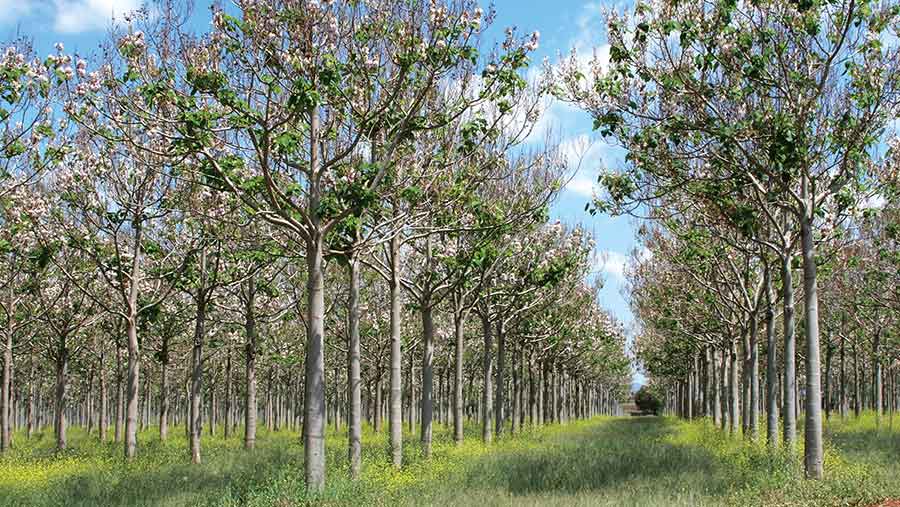The benefits of Paulownia trees for farm net-zero targets
 © Creative Fire/Adobe Stock
© Creative Fire/Adobe Stock The first-ever UK plantations of a “carbon-sucking” tree will be established on a Suffolk estate this year.
Paulownia can capture 10 times as much carbon as native British trees. Plantations are seen as a key way of mitigating the effects of climate change and helping the UK meet net-zero targets.
Some 200ha of Paulownia, a hardwood native to Asia, will be planted in nine blocks on the Euston Estate, near Thetford, following regulatory approval from the Forestry Commission and a 35-year land lease deal with a company called Carbon Plantations.
Replacing 10% of the estate’s current in-hand arable land, the plantations will be screened with native planting and blended with the estate’s existing 600ha of native woodland, enhancing its biodiversity value and ability to deliver ecosystem services.
See also: Trees can earn more than wheat under new planting scheme
Carbon and timber
In addition to its carbon capturing ability, the fast-growing Paulownia tree is recognised for the quality and strength of its hardwood timber, which has a range of applications.
This means the new plantations will have a commercial timber value too.
Planting will start in late May, after the frost threat has passed, and must be completed by the end of June.
The selected variety, known as Phoenix One, is sterile, meaning there is no chance of it becoming invasive.
To maximise biodiversity, each plantation must include 10% of native trees and 15% of open space, in accordance with UK Forestry Standards.
This will enable an understorey of grass and wildflowers to be sown, providing different wildlife habitats.
Net-zero solution
“It’s one of a number of nature-based solutions to climate change,” says estate director Andrew Blenkiron.
“The annual rent we will receive is index-linked and at least as good as we can achieve with a good crop of winter wheat.”
Consultancy Brown & Co delivered the full environmental impact statement required by the Forestry Commission – giving confidence that the plantations will deliver the environmental and financial benefits claimed.
“It took two years for the UK approval to come through for the plantations,” says Brown & Co head of natural capital Greg Beeton.
In total, some 486ha of Paulownia is due to be planted in the east of England in the next two years.
“We were successful in meeting the requirement of the environmental impact assessment and the Forestry Commission’s Woodland Carbon Guarantee, so the captured carbon can be sold in verified credits,” he said.
Carbon potential
Each 1ha of Paulownia accrues 67 carbon units annually, says Mr Beeton – much more than the nine units accrued by 1ha of native broad-leaf species and 10 units for commercial conifers.
“The other benefits of woodland are well known – from flood risk reduction to soil erosion prevention and soil structure improvements.
“It’s one of the measures that meets the natural capital approach to future far sustainability.”
Trees will be drip-irrigated for the initial stages of their development. The first timber harvest should take place after seven years, followed by a 10-year harvest cycle.
This management will allow a five-year rotational harvest.
Paulownia’s potential |
|||
| Rotation length (years) | Timber (cu m/ha a year) | Carbon units (ha/year) | |
| Native broad-leaf | 120 | 6 | 9 |
| Commercial conifer | 35 | 14 | 10 |
| Paulownia | 9 | 84 | 67 |
| Source: Euston Estate | |||
